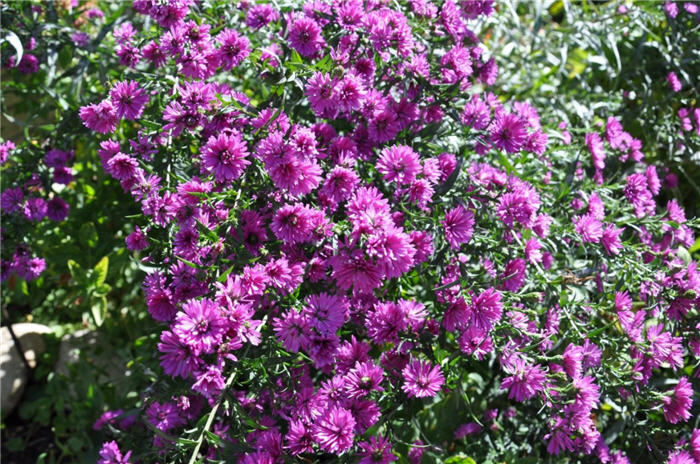| Botanical Name: Aster alpinus | |
| Common Name: Alpine Aster |

-
Anatomy
-
Culture
-
Design
Plant Type
Perennial
Height Range
Under 1'
Flower Color
Blue, Lavender, Pink, Purple, Red, Violet, White
Flower Season
Winter
Leaf Color
Green
Bark Color
n/a
Fruit Color
n/a
Fruit Season
n/a
Sun
Full
Water
Low, Medium
Growth Rate
Moderate
Soil Type
Sandy, Clay, Loam, Rocky, Unparticular
Soil Condition
Average, Rich, Poor, Well-drained, Dry
Soil pH
Neutral
Adverse Factors
n/a
Design Styles
English Cottage, Mediterranean, Ranch, Woodland
Accenting Features
Showy Flowers
Seasonal Interest
Winter
Location Uses
Entry, Perennial Border, Foundation, Patio, Walkways
Special Uses
Small Spaces
Attracts Wildlife
n/a
Information by: Stephanie Duer
Photographer:
Photographer:
-
Description
-
Notes
Alpine asters are spring blooming asters with large, daisy-like flowers in an array of colors, including pinks, purples, blues, reds, and whites. They are smaller than their summer and fall blooming kin, usually only about 6 or so inches tall and maybe 8 to 12 inches across. Tuck them at the edges of a walkway or path, so that you can look down at their cheery faces as you go by. Also nice along the edges of borders. For a spring bloomer, it has nice summer foliage, with its basal rosette of longish, strappy green leaves.
Grow in well drained soils in full sun to a little shade. They are adaptive to soil types, but it must be well drained; soggy or wet soils will be their end. Snip off spent flowers after blooming, and remove old foliage in the late winter to early spring, before new foliage emerges.